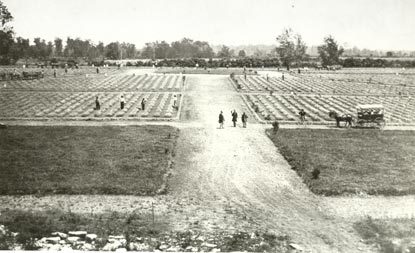 |
| 1866 Reburial of Casualties at Stones River (NPS.gov) |
MURFREESBOROUGH, TENN.,
February 9, 1863.
We have now all the reports of the subordinate commanders and staff officers. Will have my report of the battle sent forward in a few days. Some facts in it are worth stating in advance. We have prisoners from one hundred and thirty-one regiments of infantry, twelve battalions of sharpshooters, twenty-three batteries of artillery, and fifty-three regiments of cavalry, giving their fighting force at what all our officers consider a low estimate, near 46,000 infantry, 1,200 sharpshooters, 1,800 artillery, and 13,200 cavalry. Total, 62,000 men. We fought them with 42,000. We hit 165 to their 100. Their loss was 23 1/2, ours 21, per cent, of the fighting force. These figures are significant.
Yours, very respectfully,
W. S. ROSECRANS,
Major-General, Commanding.
Major-General H. W. HALLECK, General-in-Chief.
Official Records, Series I., Vol. 20, Part 1, Page 187.
Rosecrans estimate of Confederate strength (which was over by about 20,000) illustrates how thin rebel ranks were becoming. His method of estimating strength relied on the Confederates being at the normal levels for regiments, but the reality was they had far fewer men. In reality, over 30% of the men on both sides who carried weapons into battle at Stones River became casualties (killed, wounded, or missing). The fighting was some of the most intense of the war and illustrated another point. By 1863 the men were efficient fighters and had enough discipline to remain in formation and inflict sever casualties. The efficiency of fighting in early 1863 would be a signal that entrenchments would soon, of necessity come to the battlefields.
No comments:
Post a Comment